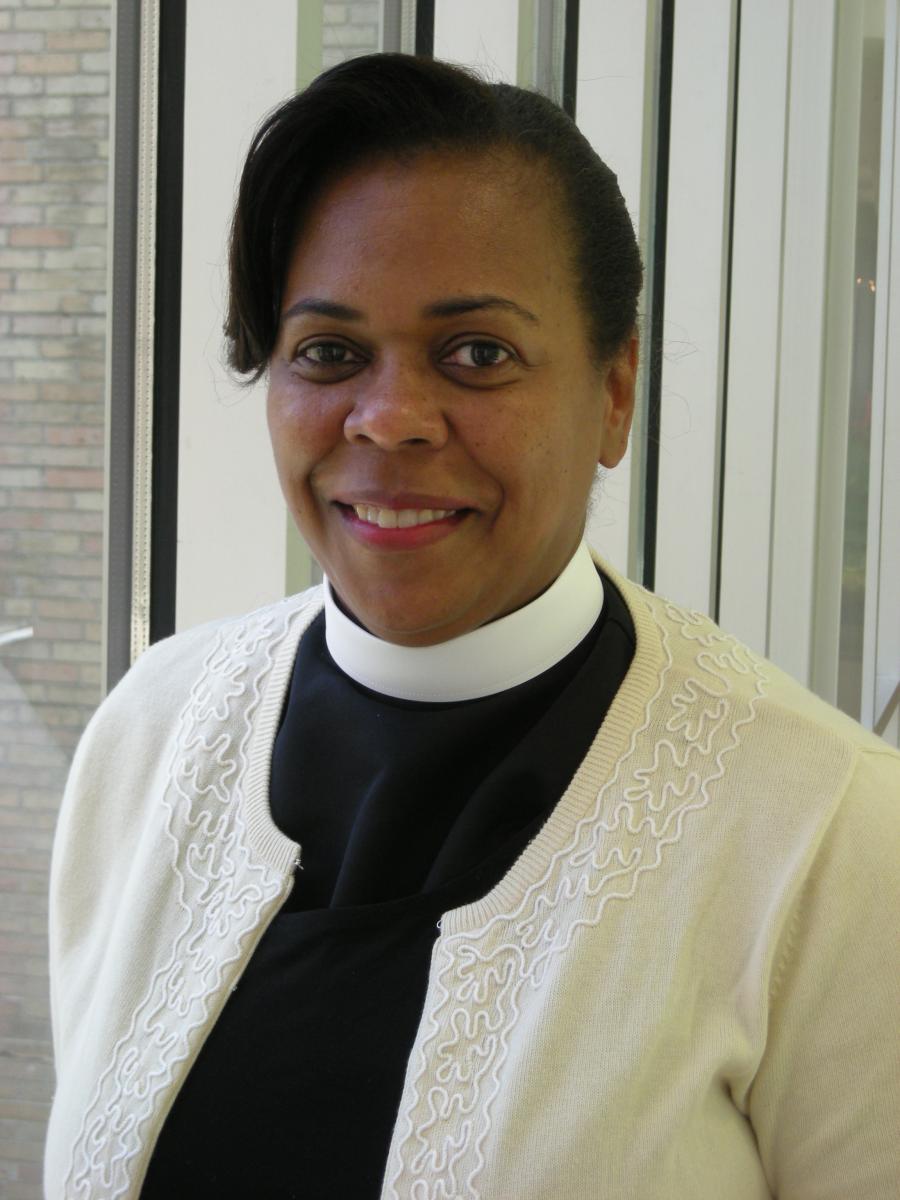
The Rev. Glenice Robinson-Como currently serves Christ Church Cathedral in Houston, TX as the Canon Pastor. Ms. Robinson-Como received an MDiv from Southern Methodist University and a Diploma of Theological Studies from Seminary of the Southwest in 2010.
Fifty years ago, the civil rights act was enacted as a means of ending discrimination. Today we stand at its anniversary perhaps pondering the question how much has really changed? As I reflect upon those she-roes and heroes who lived and died for the sake of freedom, I tremble at the same time about events in Florida and throughout the world. These are reminders that we must continue to move forward until the bells of liberty clang loudly and until truth and mercy pours out into all people in all places.
As one who grew up in the midst of laws and protests for civil liberties, I also witnessed an underground movement which constantly worked against the African American community. Growing up in Petersburg, Virginia, I was surrounded by a history of slavery, racism and the constant degradation for human life. I attended the oldest black Baptist church in North America and grew up near Pocahontas Island, which served a part of the Underground Railroad and home to many free black residents. As a young girl I remember whites living on one side of town and African Americans on the other side. Black churches occupied an area near downtown called “The Avenue” where many black businesses flourished. It was a safe area, an area where we were allowed to shop and dine freely. As a little girl, I remember how shopping later expanded into white neighborhoods, where I would ride the bus with my grandmother to the mall and travel through neighborhoods so unlike my side of town. The trips to the mall also provided a glimpse of a different life, a different community, a place that I often questioned. My favorite landmark on the bus ride with my grandmother was a building with beautiful landscaping. On the bus, I always moved to the window that would give me the best view and finally one day I asked my grandmother, “Gee (her nickname), what is the building with the pretty flowers called?” Her answer was simple as she responded, “Baby, that’s the white folks’ church”. Immediately as a young girl, I knew that was not a place for brown skinned girls who had curious minds and dreams of living in neighborhoods unlike my own.
After leaving my hometown to attend college, I still remained drawn to this church. I loved the hill it sat upon, but mostly I loved the trees, lush grass and beautiful flowers. I always had to take a second glance at this church to see what had changed, what was new, knowing I would probably never enter its doors. Eventually this church would have a new bright red door, which I felt was a perfect touch to its campus. And then after beginning seminary, for some reason I phoned my oldest sister to ask, “Do you know the name of the church with the red door?” In a neighborhood that had remained predominately white, she now lived in this very community, and the church was just around the corner. Her neighbors attended this church- her son was in school with the rector’s son. But because the remnants and sting of racism lay dormant in the souls of black folk, she still had to ride past this [white] church to find out its name. My sister would later call me back to tell me, that this church that I adored as a child, this church that was a must see on each trip to the mall was an Episcopal church. My journey into the Episcopal Church became the title of my thesis for graduate school, “The Road through the Red Door”.
I believe throughout my young life God was showing me that I would not only peer at this place from afar, but that I would also enter into this faith tradition, to serve and to become a part of its community. God was showing me bus ride by bus ride, small glimpses of a place where he would carve out a ministry where a little brown girl could enter and serve as an Episcopal priest. As one who still is committed to work for equal rights of all people, I know that God is still in the business of restoration, wholeness and justice. Thanks be to God that I am allowed in this partnership to seek out the downtrodden, the poor, the neglected, the least of these and work for freedom and equality for all. As our beloved Dr. King once said, “no one is free until we all are free”, and may I add that this freedom includes the slave and more importantly, the slaveholder. As we celebrate BHM may we be reminded that the hard work continues but within our labor stands a compassionate God who is with us guiding, redirecting paths, breaking down barriers and still overthrowing tables in the temple. This God who remains a constant force in the fight for justice and peace is still among us today.

